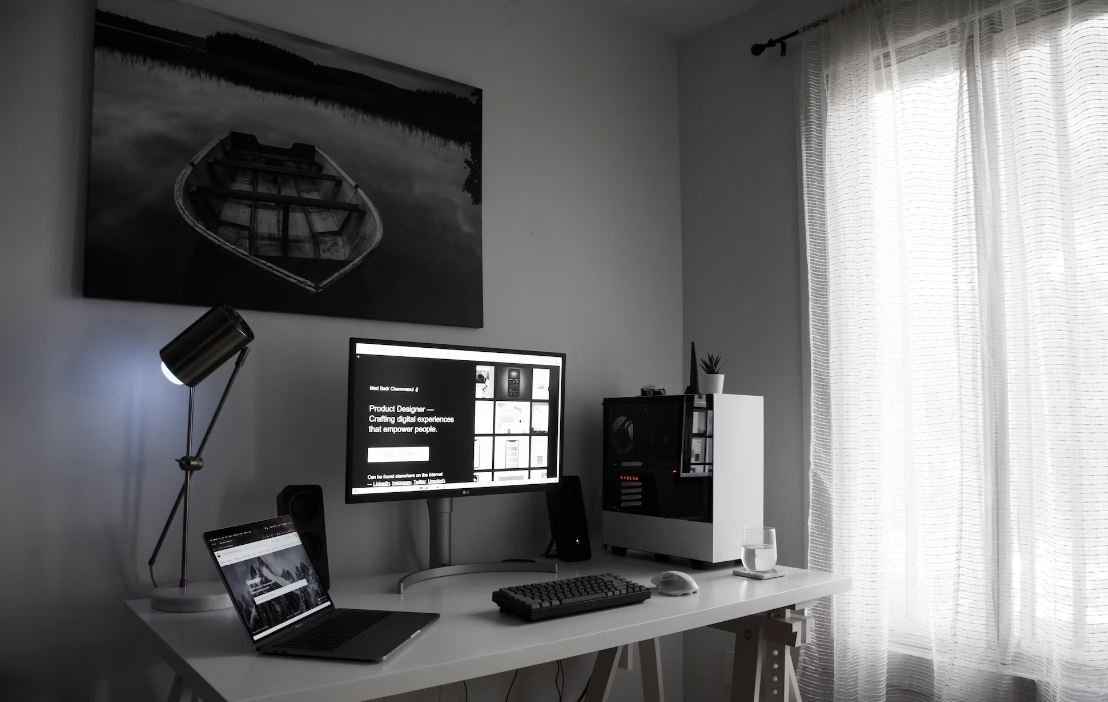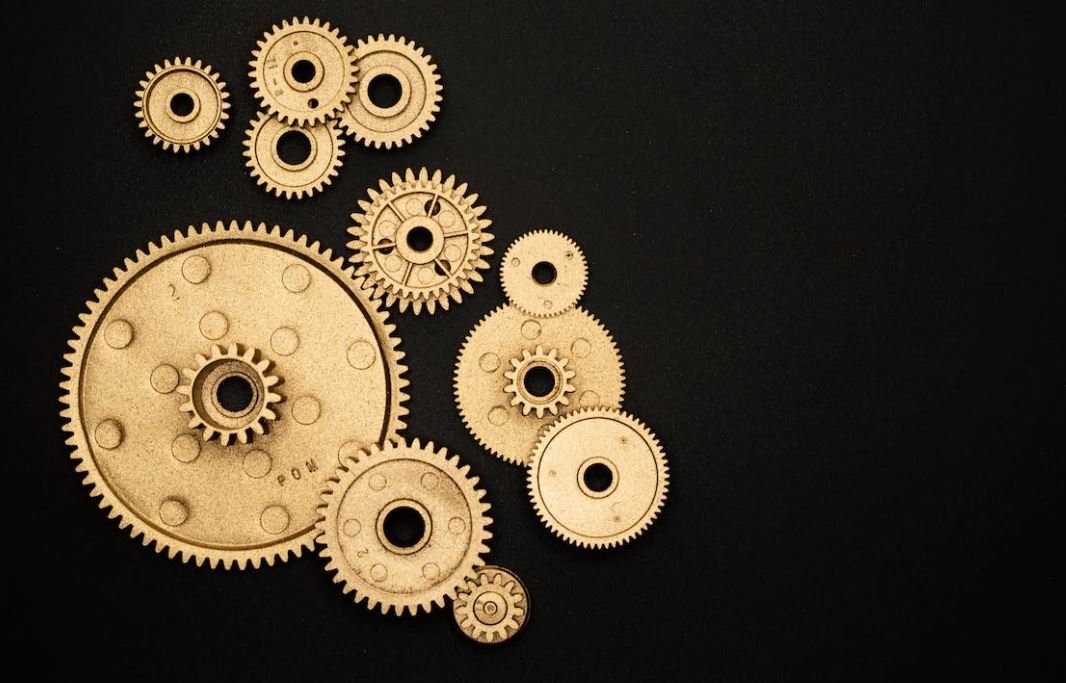Generative Art is Making Waves
Generative art, a fascinating form of artistic expression, is gaining popularity across various creative fields. In this article, we will explore the concept of generative art, its key elements, applications, and the impact it has on the art world.
Key Takeaways:
- Generative art is a form of artistic expression that uses an algorithm or set of rules to create unique visual or auditory outputs.
- It is a combination of art, mathematics, and computer programming, allowing for endless variations and combinations.
- Generative art finds applications in fields such as visual arts, music, fashion, and even architecture.
- The democratization of technology has made generative art more accessible to a wider audience.
- Generative art challenges traditional notions of authorship and human creativity.
**Generative art** is a creative process that involves using algorithms to generate unique and original artworks. Generative artists set specific parameters or rules that dictate how the artwork should be created, and then they let the algorithm do its work. *Through this process, visually stunning and intricate artworks are generated, often with unexpected results*. The use of algorithms allows for infinite possibilities and variations, making each piece of generative art truly one-of-a-kind.
Applications in Various Fields
Generative art has found applications in various creative fields, pushing the boundaries of what is possible in terms of artistic expression:
- **Visual Arts**: Generative art is used in painting, sculpture, and digital art, creating captivating and complex visual compositions that would be difficult to achieve manually.
- **Music**: Musicians and composers utilize generative algorithms to create unique melodies, rhythms, and harmonies.
- **Fashion**: Designers employ generative processes to create intricate patterns and unique textile designs.
- **Architecture**: Architects use generative design to explore different possibilities in building structures, optimizing efficiency and aesthetics.
*Generative art is a versatile discipline that transcends traditional artistic boundaries, allowing for unconventional and innovative creations in various creative domains*.
The Impact of Generative Art
Generative art has had a profound impact on the art world, challenging traditional notions of authorship and creative processes:
- **Democratization of Art**: Generative art has become more accessible to artists and enthusiasts due to the availability of user-friendly tools and software.
- **Exploration of the Unknown**: Generative art allows artists to venture into unexplored territories, pushing the boundaries of creativity and innovation.
- **Collaboration with Algorithms**: Creatives can collaborate with algorithms, blurring the line between human and machine-generated art.
- **Interactive Art**: Generative art often encourages audience participation, creating engaging and interactive experiences.
Interesting Data Points:
| Field | Notable Example | Year |
|---|---|---|
| Visual Arts | Collatz Conjecture by Vera Molnár | 1963 |
| Music | Generative Music by Brian Eno | 1975 |
| Advantages | Disadvantages |
|---|---|
| Endless creative possibilities | Chance of producing repetitive and less engaging outputs |
| Exploration of new artistic concepts | Heavy reliance on technology and programming skills |
The Future of Generative Art
As technology continues to advance, the future of generative art looks promising. *With the advent of artificial intelligence and machine learning, artists will have even more powerful tools at their disposal, enabling them to explore new frontiers of creativity*. Generative art will continue to challenge preconceived notions of what art can be, inviting us to reconsider our understanding of the creative process.
Generative art is a dynamic and ever-evolving field that sparks ingenuity and inspiration. Its impact reaches far beyond the traditional art world, influencing various industries and shaping new creative paradigms. Whether you are an artist, a technologist, or simply an admirer of art, generative art offers an exciting glimpse into the endless possibilities of human creativity and technological fusion.

Common Misconceptions
Generative Art is Made by Machines
One common misconception about generative art is that it is entirely created by machines or computer algorithms. While technology plays a significant role in the creation process, generative art is ultimately produced by artists who utilize algorithms and programming languages to assist them in their creative expression. The misconception arises from the idea that the machines are solely responsible for the creation, disregarding the artistic vision and input of the human creator.
- Artists play an active role in the decision-making process.
- Machines and algorithms are tools for artistic expression.
- Generative art is a collaboration between humans and machines.
Generative Art Lacks Originality or Authenticity
Another misconception is that generative art lacks originality or authenticity due to its reliance on algorithms and predetermined processes. However, generative artists use these tools to explore new and unique creative possibilities. Each generative art piece is often the result of careful experimentation, iteration, and artistic intuition. The algorithms act as a starting point, but the artists inject their unique perspectives and artistic sensibilities into the work.
- Generative art allows for the creation of entirely new visual experiences.
- Artists bring their individual creativity and style to the work.
- Generative art can surprise even the artist themselves.
Anyone Can Create Generative Art
While generative art emphasizes the use of technology and algorithms, the misconception that anyone can create it is misleading. Generative art requires a deep understanding of programming languages, mathematics, and visual aesthetics. Artists who create generative art often possess a combination of programming skills and artistic sensibilities. It takes time and dedication to master the technical aspects and explore the possibilities of generative art.
- Technical knowledge is essential for creating generative art.
- Understanding of algorithms and programming languages is required.
- Generative art requires a unique blend of technical and artistic expertise.
Generative Art is Strictly Digital
Many people believe that generative art is strictly created in the digital realm, limited to computer screens and digital displays. However, generative art can take various forms, incorporating traditional media and physical materials. Artists often combine digital tools with traditional art techniques to create generative art that exists beyond the digital domain. The interplay between digital and physical elements adds depth and richness to the artwork.
- Generative art can be created using traditional art mediums.
- Artists often incorporate physical materials into their generative art.
- Generative art can exist in both digital and physical forms.
Generative Art is Random and Uncontrolled
Contrary to popular belief, generative art is not solely based on random or uncontrolled processes. While randomness can play a role in generative art, artists have the ability to parameterize algorithms and carefully manipulate variables to achieve desired results. Generative artists often experiment with different settings and iterate their artwork until they achieve the desired aesthetic outcome. This misconception ignores the intentional and deliberate artistic choices made by the creators.
- Artists have control over the parameters and variables in generative art.
- Generative art involves intentional experimentation and iteration.
- Carefully crafted algorithms can produce specific visual outcomes.

Generative Art: A Brief Exploration
Generative art is an intriguing and innovative form of artistic expression, where artists utilize algorithms, computer code, and complex mathematical functions to create unique and dynamic artworks. This article provides a glimpse into the world of generative art through ten captivating examples.
1. “Autumn Symphony”
Visualizing the beauty of fall, this generative artwork incorporates multi-colored leaves cascading against a backdrop of a surreal sunset. The algorithm used in this piece simulates the movement of leaves in the wind, producing an ever-changing symphony of autumn hues.
2. “Fractal Cityscape”
Imagine a cityscape that seemingly stretches to infinity. This generative artwork employs a fractal algorithm to create a sprawling metropolis with intricate skyscrapers, winding streets, and bustling neighborhoods. Each iteration yields a distinct cityscape, resembling a futuristic dreamscape.
3. “Bioluminescent Nature”
Drawing inspiration from the wonders of the natural world, this generative art piece captures the mesmerizing glow of bioluminescent organisms. Through the use of algorithmic patterns, the artwork imitates the rhythmic pulsations and enchanting radiance of these illuminating creatures.
4. “Molecular Symphony”
Delve into the microscopic realm with this generative artwork inspired by molecular structures. The complex algorithm generates an intricate rhythmic pattern, akin to the vibrant dance of atoms and molecules. The symphony of colors emanating from this piece represents the harmony between science and art.
5. “Data Visualization”
Exploring the intersection of art and information, this generative artwork transforms data into striking visual representations. The algorithm interprets large datasets, distilling them into captivating visualizations that convey complex information in a compelling and accessible manner.
6. “Floral Kaleidoscope”
Discover an explosion of vibrant colors and intricate floral patterns in this generative art piece. Inspired by the enchanting beauty of flowers, the algorithm creates kaleidoscopic designs that evoke a sense of awe and the ephemeral nature of nature’s creations.
7. “Abstract Symmetry”
Embracing the convergence of mathematics and art, this generative artwork explores the symmetrical beauty found in abstract shapes. The algorithm seamlessly generates intricate patterns, revealing the harmony and balance present in the unseen mathematical laws that govern our world.
8. “Celestial Dreams”
Unleash your imagination as you gaze upon this generative artwork inspired by the celestial realm. The algorithm recreates the awe-inspiring beauty of stars, galaxies, and nebulae, evoking a sense of wonder and reminding us of the infinite possibilities present in the universe.
9. “Algorithmic Portraits”
Witness the unique fusion of art and technology in this generative art series depicting algorithmically generated portraits. The algorithm interprets various facial features, transforming them into abstract forms and patterns, capturing the essence and individuality of each subject in a mesmerizing way.
10. “Dynamic Landscapes”
Embark on a journey through ever-evolving landscapes with this generative artwork. The algorithm continuously generates new terrains, simulating the natural forces and processes that shape our planet. Each iteration offers a glimpse into breathtaking vistas urging us to appreciate the beauty of our surroundings.
Generative art transcends traditional artistic methods, revealing a world where algorithms become creative tools and mathematics serves as a palette. These ten captivating examples provide just a glimpse into the vast potential of generative art, as it merges technology, innovation, and imagination to redefine artistic expression.
Frequently Asked Questions
What is generative art?
Generative art refers to art created through the use of algorithms, computer programs, or autonomous systems. It is a process where the artist defines a set of rules or parameters, and the artwork is then generated by these rules, often resulting in unique, unpredictable, and dynamic creations.
How is generative art different from traditional art?
Generative art differs from traditional art in that it often involves the use of code or explicit instructions to create the artwork. Unlike traditional art, where the artist typically has complete control over the final outcome, generative art embraces randomness and computational processes to generate the final result.
What are some common techniques used in generative art?
Some common techniques used in generative art include cellular automata, fractals, neural networks, genetic algorithms, procedural generation, and data-driven art. These techniques enable artists to create complex and visually appealing artworks that evolve, react, or respond to various inputs or stimuli.
What tools or programming languages are commonly used in generative art?
Artists working with generative art often use programming languages such as Processing, Python, JavaScript, or openFrameworks. These languages provide flexibility, interactivity, and control over the generative process. Additionally, specialized software and libraries like Generative Design, Three.js, or p5.js are commonly employed.
Can anyone create generative art?
Yes, anyone with an interest in art and programming can create generative art. While some knowledge of programming concepts can be helpful, there are various beginner-friendly tools, tutorials, and resources available to get started. Experimenting, exploring, and embracing the iterative nature of generative art can lead to fascinating and unique creations.
How can generative art be exhibited or shared?
Generative art can be exhibited in traditional art galleries, museums, or through digital platforms such as websites, social media, or dedicated online communities. Generative artworks can also be shared as interactive installations or projected onto physical spaces, providing immersive experiences for viewers.
Is generative art copyrightable?
Generative art, like other forms of artistic expression, is generally protected by copyright law. The specific rules may vary depending on the jurisdiction, but the artist usually retains the rights to their artwork. However, it is important to note that generative art often incorporates various elements or sources, and proper attribution should be given when using third-party materials.
Are there any real-world applications for generative art?
Yes, generative art has found practical applications beyond the realm of artistic expression. It has been used in fields such as architecture, industrial design, fashion, music, data visualization, and even advertising. Generative art techniques can provide new insights, generate unique designs, or create dynamic visualizations that can be utilized in a range of industries.
Can generative art be interactive?
Absolutely! One of the exciting aspects of generative art is its potential for interactivity. Artists can create generative systems that respond to user input, data feeds, or environmental conditions. Interactive generative art installations allow viewers to actively engage with the artwork, influencing its behavior or appearance in real-time.
Where can I learn more about generative art?
There are numerous resources available to learn more about generative art. Online platforms like CreativeApplications.Net, GenerativeArt.com, and forums like Reddit’s r/generative provide access to tutorials, articles, galleries, and discussions on generative art. Additionally, books like “Generative Design” by Hartmut Bohnacker, “The Nature of Code” by Daniel Shiffman, and “Form+Code in Design, Art, and Architecture” by Casey Reas and Chandler McWilliams offer comprehensive insights into the topic.




